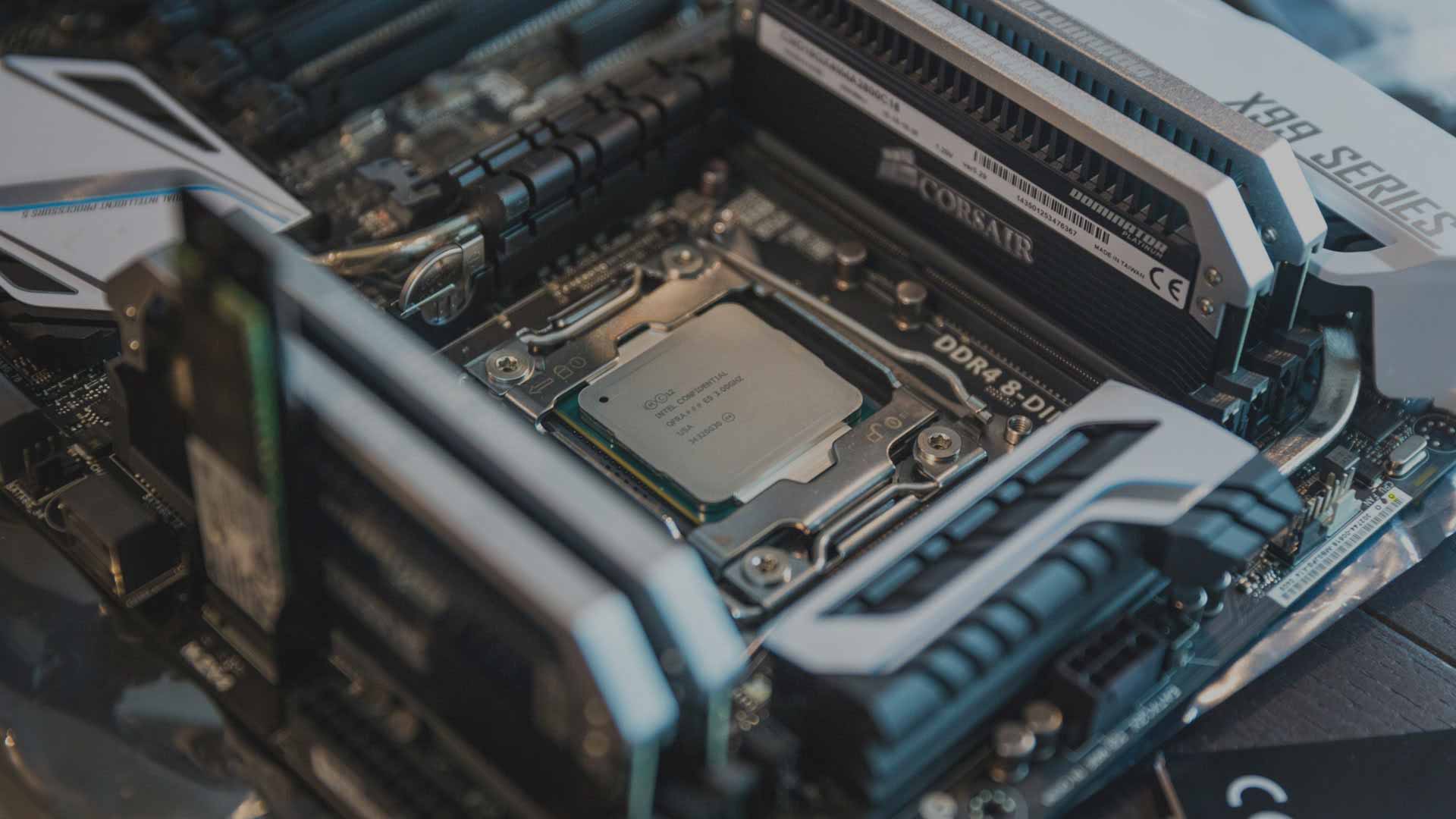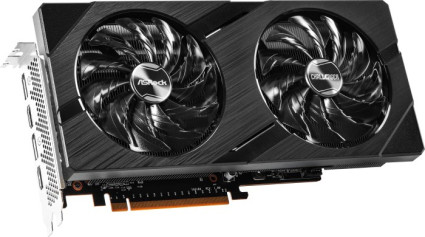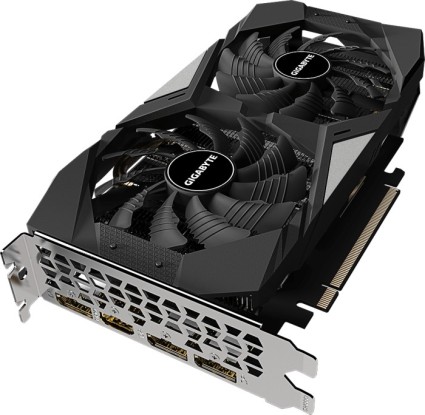
ASRock Arc A750 Challenger D 8GB OC vs. GIGABYTE GTX 1660 SUPER D6 6G
In diesem Vergleich von ASRock Arc A750 Challenger D 8GB OC versus GIGABYTE GTX 1660 SUPER D6 6G vergleichen wir die technischen Daten der beiden GPUs. Welche Grafikkarte ist schneller? Hier gibt es FPS & Benchmarks in Gaming und Anwendungen. Außerdem Daten zu Verbrauch, Effizienz (FPS pro Watt) und Preis-Leistung (FPS pro Euro).

Allgemeine Informationen
| Günstigster Preis |
|
|
| Hersteller | ASRock | GIGABYTE |
| Serie | Intel Arc A750 Graphics - 8GB | NVIDIA GeForce GTX 1660 SUPER - 6GB |
| Chip-Architektur | Xe-HPG "Alchemist" / Gen 12.7 (ab 2022/Q1) | Turing (ab 2019/Q1) |
| Chip-Bezeichnung | ACM-G10 / DG2-512 | TU116-300-A1 |
| Fertigung | TSMC 6 nm | TSMC 12 nm |
| Chip-Größe | 406 mm² | 284 mm² |
| Kühlung | 2x Axial-Lüfter (100mm) mit 0dB-Zero-Fan-Modus | 2x Axial-Lüfter (90mm) mit 0dB-Zero-Fan-Modus |
Spezifikationen
Die Anzahl der Recheneinheiten, die Taktraten sowie die Größe des Cache sind neben der zugrunde liegenden Architektur ein Indiz für die Leistungsfähigkeit eines Produkts. Die ASRock Arc A750 Challenger D 8GB OC verfügt über 3584 FP32-ALUs und hat damit deutlich mehr Recheneinheiten als die GIGABYTE GTX 1660 SUPER D6 6G mit 1408 FP32-ALUs. Der Boost-Takt der ASRock Arc A750 Challenger D 8GB OC liegt mit 2200 MHz mehr als/wie bei der GIGABYTE GTX 1660 SUPER D6 6G mit 1785 MHz.
| Basis-Takt | unbekannt MHz | 1530 MHz |
| Boost-Takt | 2200 MHz | 1785 MHz |
| Übertaktung | +150MHz Boost | - |
| Chip-Konfiguration | 28Xe / 448EU (3584SP / 224TMU / 112ROP) | 22SM (1408SP / 88TMU / 48ROP) |
| Rechenleistung | 31.54 TFLOPS (FP16), 15.77 TFLOPS (FP32), N/A (FP64) | 10.05 TFLOPS (FP16), 5.03 TFLOPS (FP32), 0.16 TFLOPS (FP64) |
Kompatibilität und Abmessungen
| Schnittstelle | PCIe 4.0 x16 | PCIe 3.0 x16 |
| Abmessung | 271 | 225,65 |
| Gesamthöhe | Dual Slot (2.4 Slots) | Dual Slot |
| Bauform | PCIe-Karte (full height) | PCIe-Karte (full height) |
| Slotblende | full height | full height |
| Leistungsaufnahme (TDP) | 225W (Intel) | 125W |
| Zusätzliche Stromanschlüsse | 2x 8-Pin PCIe | 1x 8-Pin PCIe |
Speicher
Die ASRock Arc A750 Challenger D 8GB OC verfügt über 8 GB GDDR6 Videospeicher, welcher an ein 256 Bit Speicherinterface angebunden ist und mit 16 Gbps taktet. Die Speicherbandbreite liegt damit bei 512 GB/s. Bei der GIGABYTE GTX 1660 SUPER D6 6G sind dagegen 6 GB GDDR6 VRAM mit einer Taktrate von 14 Gbps an einem 192 Bit Speicherinterface angeschlossen. Daraus resultiert eine Speicherbandbreite von 336 GB/s.
| Speicherkapazität | 8 GB | 6 GB |
| Speichertyp | GDDR6 | GDDR6 |
| Speicherinterface | 256 Bit | 192 Bit |
| Speichertakt | 16 Gbps (2000 MHz) | 14 Gbps (1750 MHz) |
| Speicherbandbreite | 512 GB/s | 336 GB/s |
Videoanschlüsse
| HDMI | 1x HDMI 2.0b | 1x HDMI 2.0b |
| DisplayPort | 2x DisplayPort 2.0 UHBR10 | 3x DisplayPort 1.4a |
Transcoding-Engine
| NVENC | - | 1x (7th Gen, max. Sessions: 8) |
| NVDEC | - | 1x (4th Gen) |
Encoding
| H.265 | ✓ (4K YUV 4:2:0 / 4K YUV 4:4:4 / HEVC 10bit support) | ✓ (4K YUV 4:2:0 / 4K YUV 4:4:4 / 4K Lossless / 8K / HEVC 10bit support / HEVC B Frame support) |
| H.264 | ✓ (YUV 4:2:0 / YUV 4:4:4) | ✓ (YUV 4:2:0 / YUV 4:4:4 / Lossless) |
Decoding
| H.265 | ✓ (8bit 4:2:0 / 10bit 4:2:0 / 12bit 4:2:0 / 8bit 4:4:4 / 10bit 4:4:4 / 12bit 4:4:4) | ✓ (8bit 4:2:0 / 10bit 4:2:0 / 12bit 4:2:0 / 8bit 4:4:4 / 10bit 4:4:4 / 12bit 4:4:4) |
| H.264 | ✓ | ✓ |
| VP9 | ✓ (8bit / 10bit / 12bit) | ✓ (8bit / 10bit / 12bit) |
| VP8 | ✓ | ✓ |
| VP8 | ✓ | ✓ |
| VP8 | - | ✓ |
| VP8 | ✓ | ✓ |
API-Unterstützung
| DirectX | 12 Ultimate (12_2) | 12 (12_1) |
| CUDA | - | 7.5 |
| Vulkan | 1.3 | 1.3 |
| OpenCL | 3.0 | 3.0 |
| OpenGL | 4.6 | 4.6 |
| Shader Modell | 6.6 | 6.7 |
| Multi-GPU-Unterstützung | - | - |
Chip-Unterstützungen
| Raytracing | ✓ | - |
| NVIDIA Tensor | - | - |
| HDCP | - | 2.2 |
Sonstiges
| Einführung | 12.10.2022 | 29.10.2019 |
| Herstellergarantie | zwei Jahre (Abwicklung über Händler) | drei Jahre (ab Produktionsdatum, Abwicklung über Fachhändler) |

